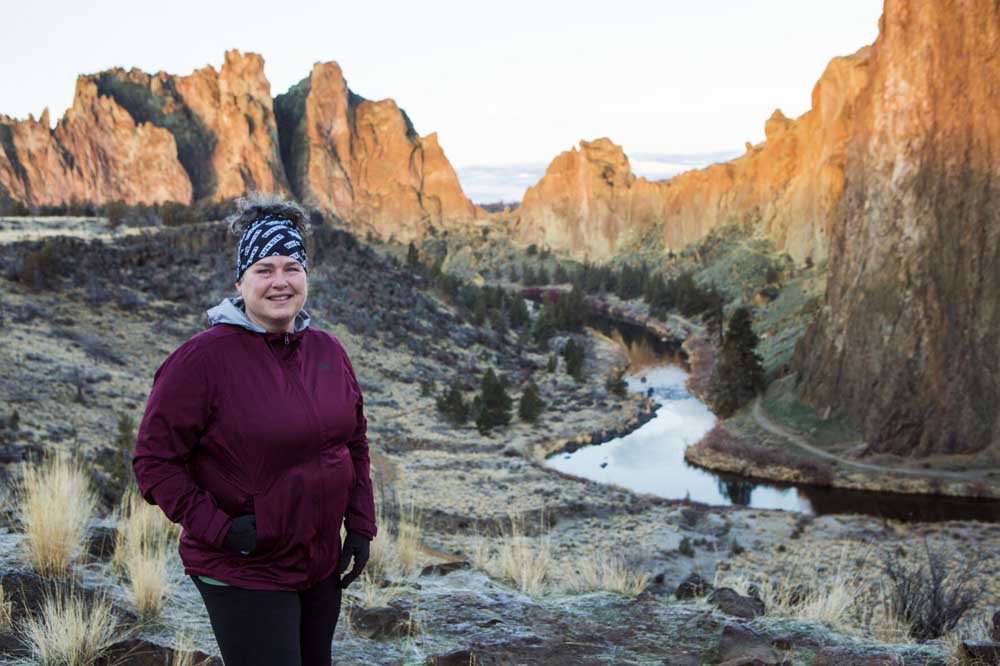Type 2 Diabetes on the rise among younger people
Published 3:00 am Friday, March 19, 2021

- Betsy Hartley lost over 200 pounds as a way to manage her Type 2 diabetes and now runs and exercises 6 to 10 hours a week to keep in shape.
More younger people were diagnosed with Type 2 diabetes in the past decade than ever before.
Trending
Some medical professionals say it’s lifestyle. Others say it’s diet.
But health authorities also say it’s not a life sentence and can be controlled with diet and exercise.
Just ask Central Oregon resident Betsy Hartley. Nine years ago, Hartley, now 52, was on medication to manage her Type 2 diabetes. Today, through diet and exercise she is able to wean herself off the medication and maintain her health.
Trending
Diabetes comes in two forms: Type 1, which usually affects young children, and Type 2, which usually affects people 65 and older. Diabetes means the body produces too much insulin or becomes resistant to insulin and causes the blood sugar to rise. When a person has diabetes it means that the body isn’t making enough, or any insulin at all, or their body isn’t responding to the insulin that’s there.
Typically Type 2 diabetes is found in people 65 and older, who were sedentary or overweight, but medical professionals say they are seeing this disease more often in younger patients.
From 2013 to 2016, by far the largest percentage of cases were among those 65 or older; coming in a close second are those 45 to 64 years old, according to National Diabetes Statistics Report 2020 produced by the Centers for Disease Control and Prevention. But in 2018, the prevalence of diabetes was nearly even between those 45 to 64 and people 65-plus, according to the same report.
“I was overweight for 40 years,” says Hartley. “How do you get healthy when you’ve never been healthy?
“Well, for me, it was one day at a time. One bite at a time. Making the right food decisions.”
And she did that to manage her diabetes, not to lose weight. So she chose veggies over a Big Mac. Water over a Dr. Pepper. A walk instead of the couch.
“I started parking my car further out,” Hartley says. “When you weigh 400 pounds, it’s hard to exercise. You can’t tie your shoes.”
Short walks led to longer walks, a 10k and then running in distance races. Now Hartley exercises 10 to 12 hours a week, walking, hiking, running and cycling.
“I used to use that time to eat and sit on the couch,” she said.
Small steps can lead to diet success, says Don Kain, an Oregon Health & Science University certified diabetes care and an educational specialist at the Harold Schnitzer Diabetes Health Center. People today are heavier and with more weight, there’s an increased risk of developing Type 2 diabetes younger in life.
“There’s no question that younger people are getting Type 2,” Kain says. “As a population, we’re getting heavier and heavier and that’s compounded with a genetic disposition for diabetes. One way to beat it is to maintain a healthy weight throughout your lifetime.”
While diet and exercise can manage the disease, Type 2 never is cured, Kain says.
“Everyone’s journey with diabetes is a little different,” he says. “The bulk of my work is with patients based on referrals from medical providers.”
One-on-one counseling and group counseling offer diet and exercise education, he says.
With COVID-19 overshadowing health care for the past year, people are not getting outside as much, nor are they seeing their medical professional for routine screenings, Kain says.
“Everyone’s stuck at home and not developing the best eating habits,” Kain says. “It becomes a vicious circle. You can reverse Type 2.”
Over the past two decades, Dr. Jeff Bulkley, a Mosaic Medical medical director who works out of the Bend clinic, has seen an increase in the prevalence of Type 2 diabetes, particularly among Latinos and other people of color.
In 2018, 34.2 million Americans, or about 10.5% of the population, had diabetes, according to the American Diabetes Association’s most current data. Because the disease doesn’t display any overt symptoms, roughly 7.3 million are undiagnosed in the United States.
The association also says that 26.8% of those 65 and older have diabetes in the United States. And each year 1.5 million Americans are diagnosed with diabetes.
Diabetes was the seventh-highest cause of death in the United States in 2019, according to the most recent data at the CDC.
Even though much research has been done on the disease, there remains a lot unknown, especially the role of genetics vs. lifestyle. Bulkley has found that his primary job as a physician is to educate his patients on how to eat a healthy diet, to fit exercise into a busy work schedule, the importance of wearing a seatbelt or how to cut back on smoking.
“A lot of the cases go undiagnosed in a lot of younger folk because they’re not coming into the clinics much,” Bulkley says. “You can change the diagnosis with lifestyle changes. It’s difficult when it’s something that requires drastic change.”
At the Harold Schnitzer Diabetes Health Center at OHSU, about 6,400 patients are seen by doctors, says Dr. Andrew Ahmann, center director. While COVID-19 has cut the number of patients the center has seen in-person or via virtual visits, it doesn’t alter the fact that diabetes is a disease that people are not taking seriously, he says.
“That’s why they develop complications,” Ahmann says. “It’s about the weight gain. No one knows what kind of foods cause diabetes.”
Some say sweetened soft drinks, but fast food and a high-fat diet can cause diabetes.
It’s particularly acute in the Latino population, Ahmann says. When both parents have diabetes, the likelihood of their child getting Type 2 diabetes is 80%, he says. If one parent has Type 2 diabetes, the likelihood is 50% that their child will get it.
When Dr. Mary Carroll, an endocrinologist at Summit Medical Group Bend Memorial Clinic, began practicing medicine about 20 years ago, she rarely saw Type 2 diabetes in children and youth. Today, however, children account for about a third to half the new cases. She credits high-calorie foods and a sedentary lifestyle as the culprits.
Managing diabetes requires flexibility and can be tailored to the individual’s lifestyle, Carroll says.
“I have numerous patients who have made significant lifestyle changes and reversed their Type 2 diabetes,” Carroll says. “It can be fixed, but those lifestyle efforts are ongoing.”
Hartley, who lost 200 pounds, has made drastic changes to her lifestyle, especially since she is not taking medication. Her story started about 2005 when she was at the doctor’s office for a wound on her foot that wouldn’t heal and learned she had diabetes. Her physician pushed for amputation. She pushed for medication and attempted diets and exercise, but nothing stuck.
Then in 2010, her mother died. Something clicked. She changed the way she framed her thinking. When she slipped up on her diet, she didn’t think of it as failure, but rather a mistake that could be corrected.
“I started with super small baby steps and then I started walking more and more,” Hartley says.
Her journey led her to running and training for ultra-long races. And in 2016, she ran her first ultra-long race of 100K called Mountain Lakes 100. Combining the training regimen with a low carbohydrate, healthy fat diet has gotten her to where she is today, Hartley says. She found that she had to find the right combination of diet and exercise that worked for her glucose levels.
There are many diabetes management programs run by health care professions. In Crook County, for example, they call it Band Together to Dodge Diabetes, and it’s for those who have a pre-diabetes diagnosis. Participants work with a lifestyle coach in one-on-one sessions and in groups.
“I’m kind of a unicorn,” Hartley says. “I just reached this moment when my fear of dying was less than my desire to live. I wanted to live. I wanted to go see the mountain tops and fit in an airplane seat. That was driving my desire.”









